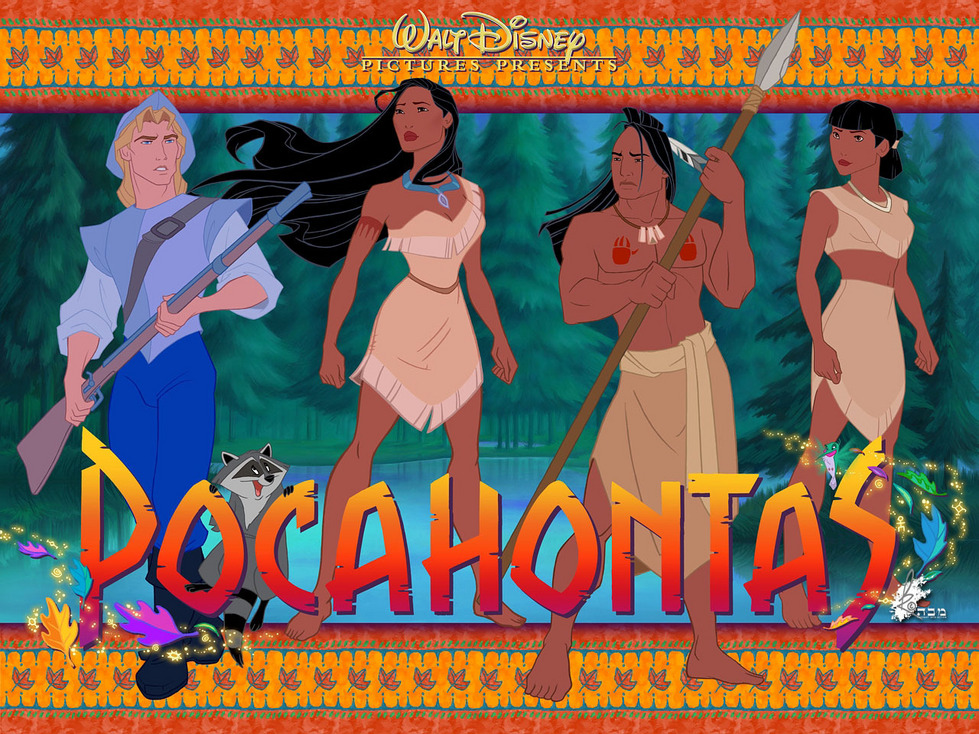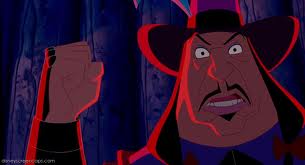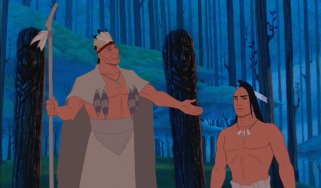Disney and Religion: A Look at Non-Western Cultures

Non-Christian Religion
Captin John Smith leads a band of English sailors and soldiers to the New World to find its riches for England.For Governor Ratcliffe, it is about finding it from himself. Meanwhile, in this New World, Chief Powhatan has pledged his daughter, Pocahontas, to be married to the village's greatest warrior. Pocahontas, however, has other ideas. She has seen a vision of a spinning arrow, a vision she believes tells her change is coming.Grandmother Willow tells her to listen to heart. Her life does indeed change when the English ship lands near her village. She meets John Smith and soon develop a relationship. Pocahontas begins to teach him of their spirituality, about the connection between nature and people. Soon John Smith understands Pocahontas and her people and does not want to steal from them or harm them. Ratcliffe, who believes the "savages" are hiding the gold he expected to be plentiful sends Thomas out after John Smith to see where he is sneaking off too all the time. Thomas finds that John Smith and Pocahontas have fallen in love with each other and in an attack, kills Kocoum. John Smith is then captured and a war breaks out between the Native Americans and the English soldiers. Pocahontas saves John Smith from being killed but Ratcliffe shoots at Powhatan in which Smith jumps in front to be shot instead. Ratcliffe is tied up and shipped back to England, and John Smith is sent back to receive medical treatment, Pocahontas decides to stay with her people saying that she is needed there.
This film heavily depicts animism, the religious belief that nature such as plants and animals, possess a spiritual essence. Pocahontas and all the Native Americans in this film believe in spirits and value the nature around them. The Englishmen are depicted as Christians and are in the New World to take it over but instead of them "converting" the Native Americans to their faith it is Pocahontas that shows John Smith the spiritual way of animism. This is shown through the song "Colors of the Wind" in which Pocahontas reveals to him the wonders of nature and the spirit within all living things and tries to encourage him that things are not meant to be conquered but rather they are meant to be respected and harmonized with people. During this song it is as if nature comes alive where spirits are dancing in the wind. The film also uses the idea of animism through the depiction of human characteristics in nature and animals and trees.This is seen through Grandmother Willow who is a tree that displays a human face, she provides Pocahontas with spiritual guidance and Pocahontas confides in her when she is unsure of what path she should choose. Unlike Disney's depiction of the Islamic religion as negative and inaccurate, this film is presenting animism in a positive and important way of living.
Racism
This is the first film in which Disney depicts Native Americans but many critics of Disney see it as stereotypical and that the portrayal of Native Americans is deceitful. This is argued because the story in which the movie is based is heavily distorted and there are many inaccuracies as to what really happened in history. Nevertheless, one of the biggest portrayals that is made is the idea of "good / bad" Indian and that Pocahontas' image highlights an American standard norm of beauty. Another aspect of racism that is argued to be evident is the language that is used such as "savages", "heathens", and "devils". These terms imply something wild, inferior and uncivilized. The lyrics of the song Savages are offensive and are said to lack cultural sensitivity and are detrimental to Native Americans. The song begins with Ratcliffe saying "What do you expect from flithy little heathens? Here's what you get when the races are diverse. Their skin's a hellish red. They're only good when dead..." The lyrics appear to condemn the idea of mixing of races with a perference for the white European race. From the lyrics it portrays Native Americans as unpredictable, uncivilized and uneducated individuals and it is argued that some of the lyrics insult Native Americans for their lack of knowledge of the Christian God and that Disney is highlighting the American religious views and portraying any other ideal as deviant. But are these the real messages Disney are displaying? In fact Disney does not appear to give dominance to the white European settlers and their Christian faith, as mentioned in the previous section, Pocahontas shows John Smith the way of her people, animism, and he becomes accepting of this ideal. Animism is heavily depicted throughout the film, being presented in a positive manner, while there is very little mention of Christianity. While the song Savages does have lyrics that are considered insulting to Native Americans, during the song Disney uses a visual "pun" while the European accusations are being sang, while Ratcliffe claims "They're skin's a hellish red." Disney visually colors Ratcliffe with red lighthing making a more silent statement of who the "evil" ones really are in the film. Disney does not depict the Native Americans in an "uncivilized" way or as "savages" rather they represent them as gentle people who are respecting and harmonized with the world around them, in contrast to the Europeans who appear more greedy and uncivilized by destroying nature and carrying guns. Disney does not truly appear to display racism towards Native Americans in this film
Sexism
In the historical events of Pocahontas, she was not an adult when the Europeans came to her land, she was around the age of 12, therefore critics claim that Disney created another stereotypical image of women in this film. Despite the fact that Pocahontas is adventurous, wise and independent, she still falls in love and is willing to give up something for her man, in this case her life. She is willing to risk her life to defend John Smith from being killed by her father and she throws herself around him to prevent her father from harming him. This film also portrays stereotypes women's role in society, such as when Pocahontas and Nakoma are retrieving corn to bring back to their village, it displays that it is their job to provide to the men of the village. Another stereotype that critics argue Disney portrays in this film is the idea of women and marriage and that it is their role is to be suitable for marriage and domestic life. Although Pocahontas is set to marry Kocoum in the end she does not him or John Smith. The claims of sexism with regards to marriage does not fit this film, not only does Pocahontas not marry she also decides to stay with her people rather than traveling back to England with John Smith. This shows Pocahontas as an independent and strong woman, although she does fall in love, she does end up married or moving away with a man, separating her from the stereotypical image of women that Disney usually portrays in their films.

Ratcliffe during the song Savages

Kocoum and Chief Powhatan
Pictures
Videos
Animism shown through Colors of the Wind